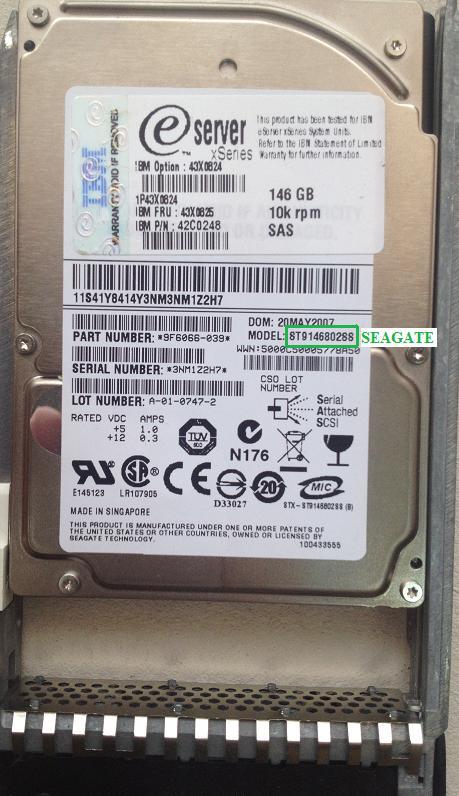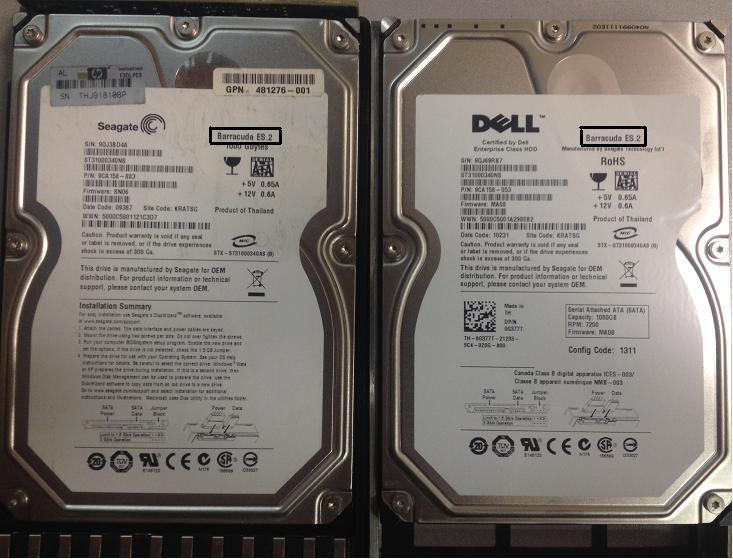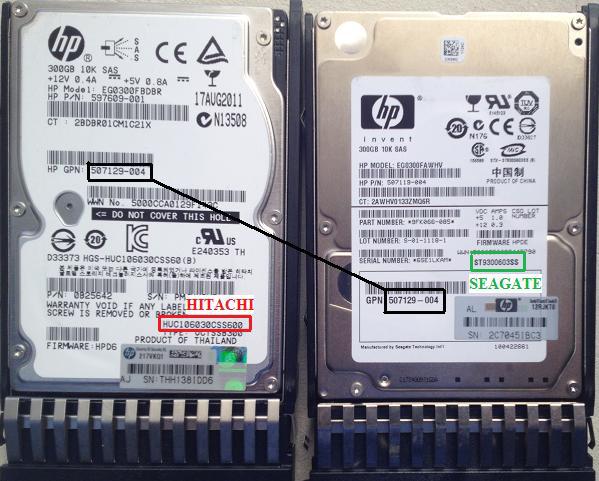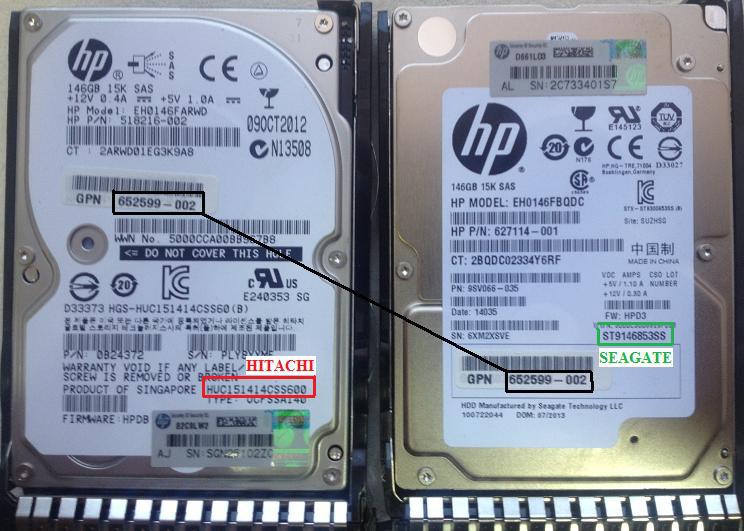And these people forbid me to pick one's nose ... (in continuation of the theme of the sled for the HDD)
The topic of using the slide for HDD is very controversial. The constant question arises: is it worth using non-original hard drives and what risks does this use bear? In response to this question, there is a whole mass of different opinions, as demonstrated by the article of August 5, “Sled for HDD - a rational link of expenses ”. In short, it raises the topic of possible savings on the acquisition of server hard drives directly from the manufacturers of HDD and slide to them, instead of overpaying vendors for brand nameplates and firmware on the same drives.
What arguments were given in the article? The advantages of the original hard drives were ranked firmware from the manufacturer of the corresponding server hardware, testing them and his own warranty. In the purchase of non-original discs, the plus price was made twice (and sometimes three times) the lower price, as well as the warranty and test from the manufacturer of the HDD. Especially a lot of attention was paid to the firmware and discussion of its price. However, some aspects still escaped attention. Anyway, there are a lot of questions about the originality of server disks.
It's no secret for a long time that server hardware companies are not engaged in HDD production on their own. Instead, proprietary flashing and testing of discs from Seagate, Hitachi, Fujitsu, WD, etc., is done with the assignment of a brand nameplate and Part Number. Often the discs do not go under the vendor’s auspices, but under the manufacturer’s logo and with a small holographic vendor sticker.

In the case of IBM, the logo of the manufacturer is simply stuck with such a sticker, but in its native Part Number it is absolutely clear - the manufacturer of Seagate.
')

Moreover, quite mysterious HDD, initially released not for servers, like the Seagate Cheetah or Constellation series, but for the PC - Barracuda ES.2 come across.

Question: Is it possible to trust the quality of such original discs?
Anyway, a lot of questions. Here's another one: how to understand when the original HP 146 GB 15k SAS drives manufactured by Seagate with the same firmware version of the HP (HPD3) GPN are different?

Although HP P / N is identical in this case, the GPN is assigned by the vendor to determine compatibility. So what to believe here: Part Number HP or the notorious GPN from the same HP?
Another point that I would like to consider. Suppose HDDs are formed in a RAID (array), and it is formed from original proprietary disks with an identical Part Number (GPN). In various manuals and recommendations for creating a RAID array, it appears that the disks should be exclusively from the same manufacturer, moreover, it is desirable that they be from the same batch. Otherwise, there can be at least significant changes in performance, and there are motherboards on which the BIOS refuses to do a RAID at all. The main problem is that the manufacturers of server equipment for one and the same Part Number stamp disks from different manufacturers. As an example, Hitachi and Seagate 300 GB 10K SAS drives

or 146 GB 15K SAS.

Where is the guarantee that the original discs you ordered will be represented by at least one manufacturer? It is possible that the discs will be compatible and the array based on them will live a long and productive life, but the risk that this kind of vinaigrette carries is quite noticeable.
For example, consider fault-tolerant RAID5. The fact is that the data stream as it arrives at the disks is divided into blocks (stripes) and distributed across the array by the RAID controller, which is why the synchronization of the HDD becomes important. And, although the rotational speed of the disks is denoted the same, the out-of-sync in disk arrays consisting of HDDs from different manufacturers is observed quite often. As a result, this leads to a distortion of information or its complete loss. It is difficult to sufficiently study what exactly this is connected with, but in an array consisting of identical disks, this phenomenon is observed much less frequently. By purchasing from the dealer the nth number of such original discs, it is likely to run into a scattered batch from various manufacturers.
Well, what happens: the whole idea of confirming compatibility from vendors, all this abundance of various Part Number is more evil than good. Personally, it would be much safer for me to buy a slide for the HDD and a batch of Seagate Constellation drives than to fool around with such constantly-emerging issues.
What arguments were given in the article? The advantages of the original hard drives were ranked firmware from the manufacturer of the corresponding server hardware, testing them and his own warranty. In the purchase of non-original discs, the plus price was made twice (and sometimes three times) the lower price, as well as the warranty and test from the manufacturer of the HDD. Especially a lot of attention was paid to the firmware and discussion of its price. However, some aspects still escaped attention. Anyway, there are a lot of questions about the originality of server disks.
It's no secret for a long time that server hardware companies are not engaged in HDD production on their own. Instead, proprietary flashing and testing of discs from Seagate, Hitachi, Fujitsu, WD, etc., is done with the assignment of a brand nameplate and Part Number. Often the discs do not go under the vendor’s auspices, but under the manufacturer’s logo and with a small holographic vendor sticker.

In the case of IBM, the logo of the manufacturer is simply stuck with such a sticker, but in its native Part Number it is absolutely clear - the manufacturer of Seagate.
')

Moreover, quite mysterious HDD, initially released not for servers, like the Seagate Cheetah or Constellation series, but for the PC - Barracuda ES.2 come across.

Question: Is it possible to trust the quality of such original discs?
Anyway, a lot of questions. Here's another one: how to understand when the original HP 146 GB 15k SAS drives manufactured by Seagate with the same firmware version of the HP (HPD3) GPN are different?

Although HP P / N is identical in this case, the GPN is assigned by the vendor to determine compatibility. So what to believe here: Part Number HP or the notorious GPN from the same HP?
Another point that I would like to consider. Suppose HDDs are formed in a RAID (array), and it is formed from original proprietary disks with an identical Part Number (GPN). In various manuals and recommendations for creating a RAID array, it appears that the disks should be exclusively from the same manufacturer, moreover, it is desirable that they be from the same batch. Otherwise, there can be at least significant changes in performance, and there are motherboards on which the BIOS refuses to do a RAID at all. The main problem is that the manufacturers of server equipment for one and the same Part Number stamp disks from different manufacturers. As an example, Hitachi and Seagate 300 GB 10K SAS drives

or 146 GB 15K SAS.

Where is the guarantee that the original discs you ordered will be represented by at least one manufacturer? It is possible that the discs will be compatible and the array based on them will live a long and productive life, but the risk that this kind of vinaigrette carries is quite noticeable.
For example, consider fault-tolerant RAID5. The fact is that the data stream as it arrives at the disks is divided into blocks (stripes) and distributed across the array by the RAID controller, which is why the synchronization of the HDD becomes important. And, although the rotational speed of the disks is denoted the same, the out-of-sync in disk arrays consisting of HDDs from different manufacturers is observed quite often. As a result, this leads to a distortion of information or its complete loss. It is difficult to sufficiently study what exactly this is connected with, but in an array consisting of identical disks, this phenomenon is observed much less frequently. By purchasing from the dealer the nth number of such original discs, it is likely to run into a scattered batch from various manufacturers.
Well, what happens: the whole idea of confirming compatibility from vendors, all this abundance of various Part Number is more evil than good. Personally, it would be much safer for me to buy a slide for the HDD and a batch of Seagate Constellation drives than to fool around with such constantly-emerging issues.
Source: https://habr.com/ru/post/265967/
All Articles